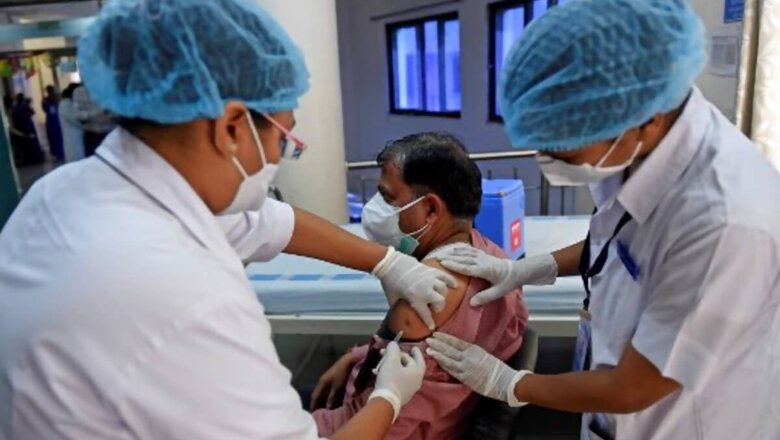
views
The growing hesitancy among citizens to take the much-awaited Covid-19 shot has less to do with trypanophobia and is more about the fear and anxiety brought on by reports of side effects – sometimes fatal – in a few cases. Although in none of the cases, the post-jab medical conditions were proved to be a direct result of the Covid-19 vaccine, there is rising uncertainty in people about taking the shot in the arm.
The dilemma before the Centre, although new, was not unanticipated. Internal assessments within the Union Health Ministry have also thrown up numbers to underscore this.
To tackle this, the government, however, is not keen on political messaging, sources say, but is planning to roll out an elaborate multi-pronged approach to change the public discourse.
Dr VK Paul, head of the National Task Force on Covid-19, himself got the shot in an attempt to change optics but has had little to no luck. In a press conference on Tuesday, he said he was upset that even healthcare workers were refusing to take the shot. “A lot of effort has gone to making the vaccine against Covid-19,” he had said.
But the Centre is planning to go back to the drawing board – a communication strategy document it had prepared earlier.
Here is how they plan to deal with the issue:
Build trust and enable confidence
“This will be achieved by using social influence or endorsements from experts and official voices,” reads the document.
Involving community mobilisers and frontline workers to engage with the community at various levels, the establishment of a National Media Rapid Response Cell (NMRRC) at MoHFW to spell out the process of immunisation, are some of the other suggested measures.
The Centre also advises states to organise community consultations, get faith leaders involved and organise religious meetings, ensure preparedness through media monitoring and social listening and respond in real-time. There has to be an emphasis on safety and efficacy, engaging the youth and civil society organisations and monitoring media, the document stated.
The document emphasised: “The idea is to provide correct, consistent and timely information on the new Covid-19 vaccine and the vaccination process.”
A full frontal approach
Celebrities across sections – sports, entertainment, politics – must be used to influence citizens. Local leaders, social-cultural leaders, panchayat leaders, teachers and supervisor, AWW, ANM, ASHA workers should also be roped in to spread the message that the vaccine is safe, the document suggests.
Gram sabha, school management committee, children’s school cabinet, NSS, NYKS, scouts & guides, cooperatives should be involved.
Social media, mass media like DTH, cable TV networks, television, radio, mobile, print should be used to address concerns. Outdoor media like wall paintings, hoardings, bus panels, led scrolls, posters, banners must also be used.
Key components of advocacy
To drive the point home, dignitaries including Prime Minister Narendra Modi, parliamentarians, Ministry of Health and Family Welfare, and other ministries in the central government and their field-level networks will put out positive messages. Professional bodies like IMA, doctors and health workers, alternate medicine practitioners, Rotary and lion’s club to also be made a part of the outreach. National and local media representatives, public and private sector companies, development partners, civil society, community-based organisations and religious and faith-based leaders must be involved.
To work at the national, state and district level, the strategy lists multi-language media propaganda consisting of opinion pieces, and interviews and discussions with scientists, experts and other credible voices.
At the state level and district, the advise is for the State Task Force to develop a state communication plan for the Covid-19 vaccination rollout and prepare a written appeal from chief ministers to all elected representatives.
Read all the Latest News, Breaking News and Coronavirus News here

















Comments
0 comment